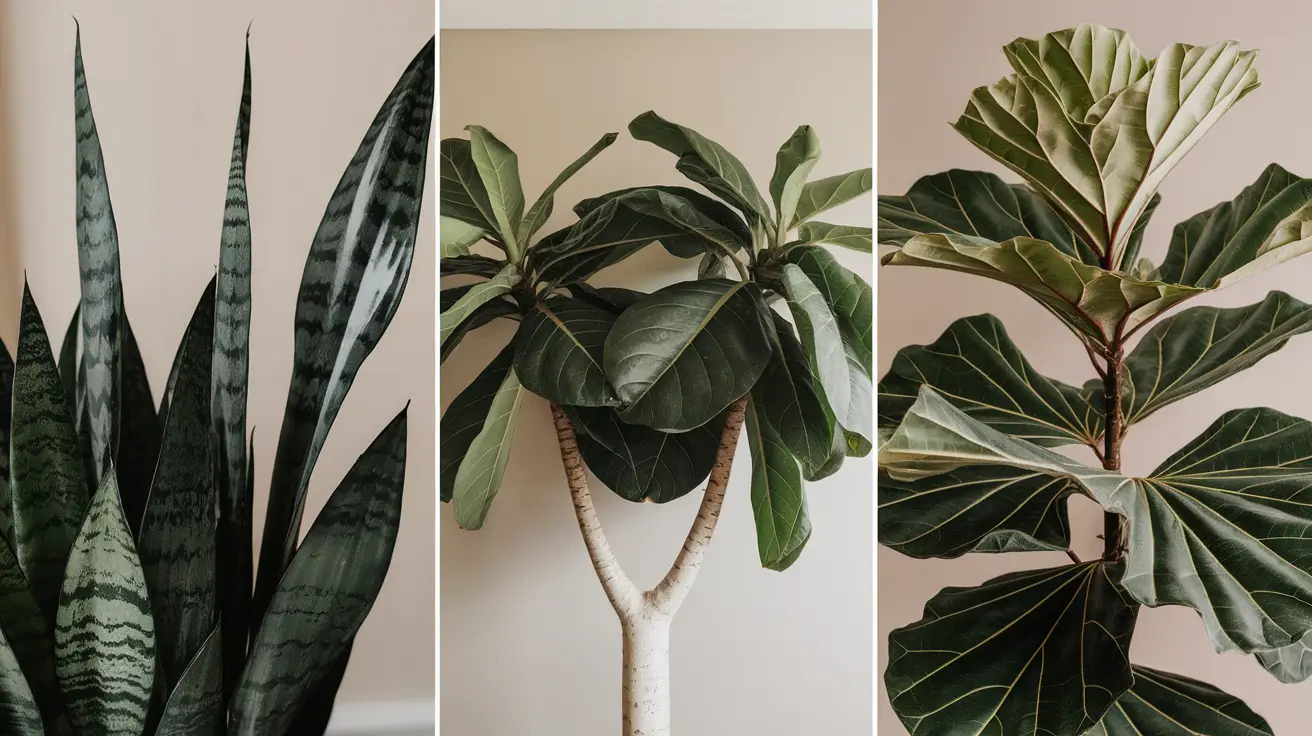18 Best Indoor Trees: Top Picks for a Green, Lush Home
Indoor trees are a beautiful and practical way to bring nature indoors. With their lush greenery and decorative appeal, they can transform your home into a tranquil oasis.
Besides aesthetics, indoor trees also improve air quality, boost productivity, and even reduce stress.
Looking to upgrade your space with some greenery?
Whether you’re a beginner or a seasoned plant enthusiast, we’ve curated a list of the 18 best indoor trees along with tips for maintaining them.
18 Best Indoor Trees
1. Fiddle Leaf Fig (Ficus lyrata)
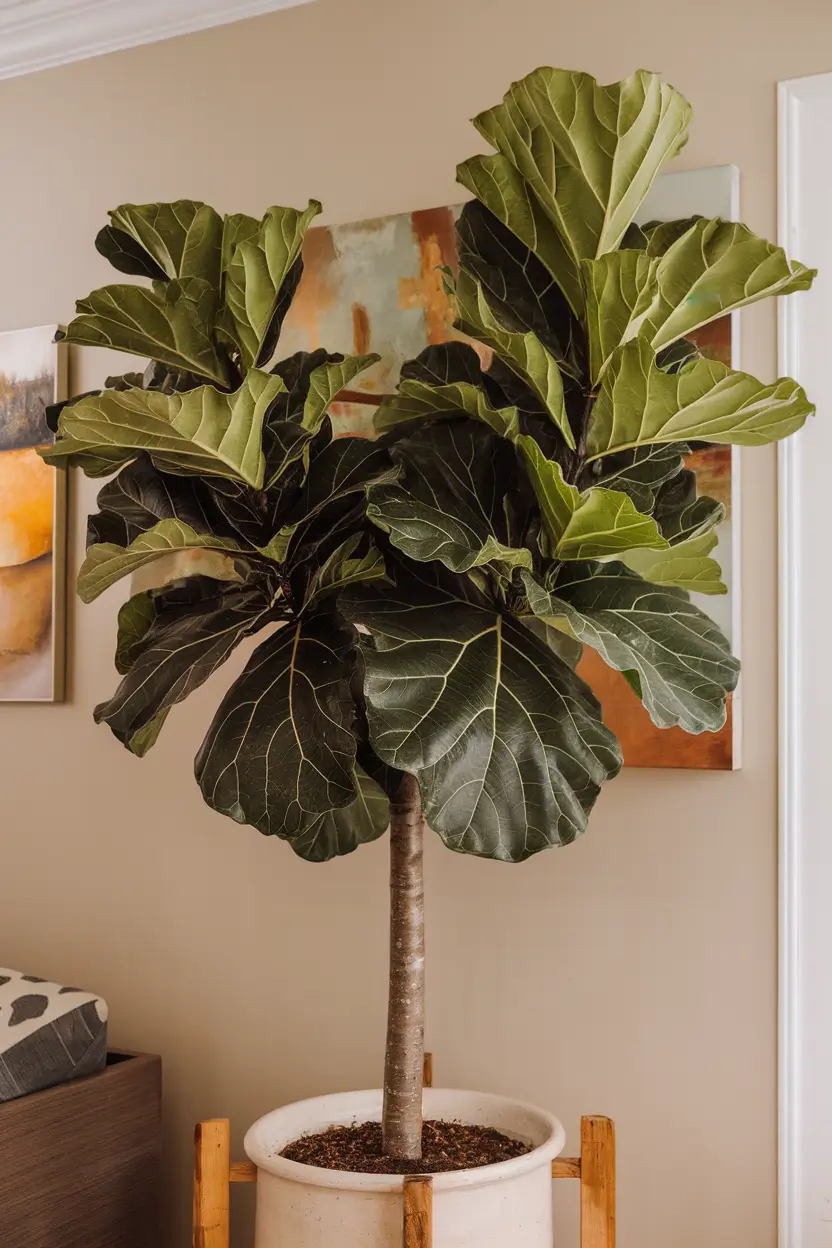
Known for its broad, glossy leaves and tall, sculptural look, the fiddle leaf fig is a favorite among plant lovers and interior designers alike.
This iconic houseplant thrives in bright, filtered light and loves humidity, making it perfect for bathrooms, well-lit living rooms, or even offices with ample natural light.
Be sure to rotate it occasionally to ensure even growth and wipe down its large leaves to keep them free of dust and able to absorb light efficiently.
Regular watering is key, but let the soil dry out a bit between waterings to prevent overwatering.
2. Citrus Trees

The intoxicating scent of blooming lemon, lime, or orange trees can brighten any room, bringing a little slice of the Mediterranean to your home.
However, citrus trees are high-maintenance and require lots of direct sunlight, consistent watering, and high humidity to thrive.
They’re ideal for spaces with ample sunlight, like a sunroom, balcony, or a spot near a large, south-facing window.
Fertilize them regularly during their growing season to encourage healthy growth and fruit production. While they may take extra effort, the reward of fresh citrus is well worth it!
3. Weeping Fig (Ficus benjamina)

The elegant weeping fig is a versatile, low-maintenance option that adds a touch of greenery with its cascading branches and small, glossy leaves.
It grows well in bright, indirect light but can tolerate lower light conditions, making it an adaptable choice for different spaces around your home. The weeping fig prefers slightly dry soil between waterings, so avoid overwatering.
Keep it away from drafts, as it can be sensitive to sudden temperature changes, and prune it occasionally to maintain a neat shape.
4. Rubber Tree (Ficus elastica)
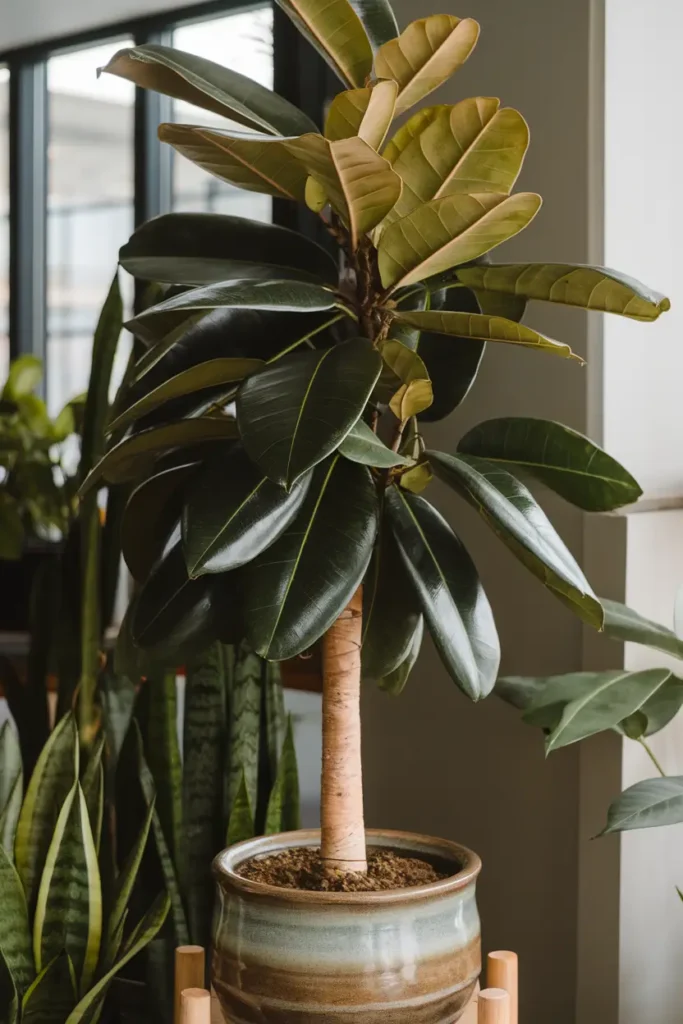
With its thick, glossy leaves and bold appearance, the rubber tree is both striking and surprisingly easy to care for. This resilient houseplant grows quickly in moderate to bright indirect light but can tolerate lower light levels for short periods.
It thrives with regular watering during its growing season, though you should allow the soil to dry out slightly between waterings.
Dusting its large leaves occasionally will not only keep them shiny but also free of debris that might block sunlight. As it grows taller, you can prune it to maintain your desired height or encourage bushier growth.
5. Banana Tree (Musa spp.)

The banana tree makes a bold statement with its oversized, tropical foliage that instantly transports you to a lush paradise. This tropical plant loves warm temperatures, full sunlight, and consistent moisture, making it ideal for bright, sunny rooms.
However, it’s important to maintain high humidity levels to keep its large leaves looking vibrant and healthy.
Opt for dwarf varieties for easier indoor maintenance, as full-size banana trees can grow quite large. With the right care, you may even be rewarded with small, edible bananas!
6. Norfolk Island Pine (Araucaria heterophylla)

These miniature evergreen trees are a charming addition to any home, doubling as festive holiday decor and year-round greenery. Norfolk Island Pines prefer cool temperatures, bright indirect light, and slightly acidic soil to thrive.
While they resemble outdoor pine trees, they are not as hardy and prefer to stay indoors in most climates. Avoid placing them in direct sunlight, as it can scorch their delicate foliage.
Water them consistently, but allow the top layer of soil to dry out between waterings to prevent root rot.
7. Umbrella Tree (Schefflera spp.)

Popular for its glossy, symmetrical leaves that resemble an umbrella, the umbrella tree is a low-maintenance houseplant that thrives in a variety of indoor conditions. It can tolerate lower light levels, making it a great choice for dim corners or offices with fluorescent lighting.
However, it does best in bright, indirect light. It requires regular watering, but be sure to use well-draining soil to avoid waterlogging.
Prune it occasionally to control its size and shape, and wipe down its leaves to keep them looking fresh and healthy.
8. Yucca Tree (Yucca spp.)
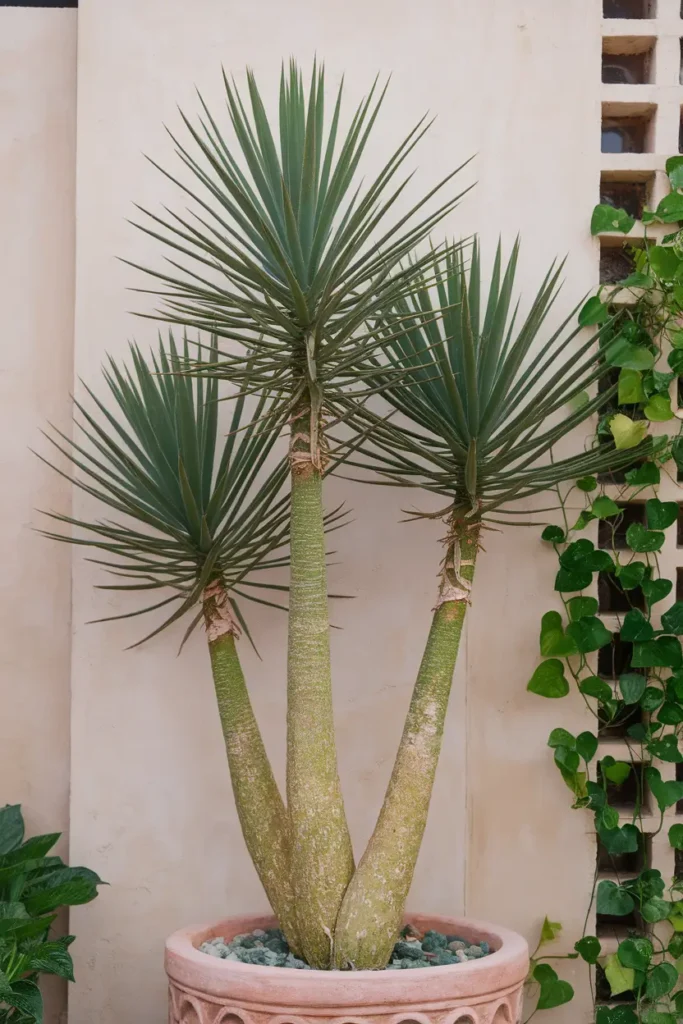
If you’re short on time, the yucca tree is the perfect low-maintenance plant for your space. Its hardy nature allows it to thrive with minimal watering and care.
Place it in a spot with bright, direct sunlight for best results, such as near a sunny window or on a balcony.
Its sword-like leaves and upright growth habit make it a striking, architectural statement piece. Be careful not to overwater, as the yucca prefers dry soil and is susceptible to root rot.
9. Jade Plant (Crassula ovata)
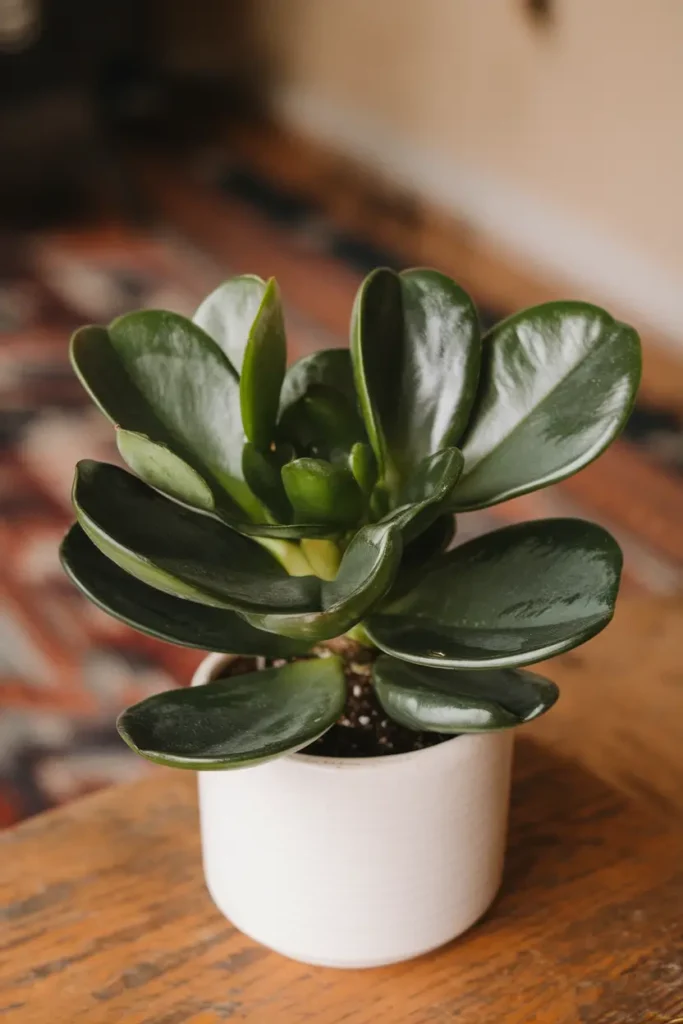
This low-maintenance succulent is a favorite among plant enthusiasts and bonsai lovers. The jade plant thrives in bright, filtered sunlight and produces thick, glossy leaves that can take on a reddish tint when exposed to direct light.
It only requires watering every few weeks, making it a great option for forgetful plant parents. Use a well-draining potting mix, and be sure to keep it in a warm space, as it doesn’t tolerate cold temperatures well.
With proper care, a jade plant can live for decades and even become a family heirloom.
10. Money Tree (Pachira aquatica)

Known for its braided trunk and lush, vibrant foliage, the money tree is a symbol of good luck and prosperity.
It thrives in indirect light, high humidity, and consistently moist soil, making it a great addition to bathrooms or well-lit living spaces. Be sure to avoid overwatering, as its roots are prone to rot.
The money tree is easy to maintain and can adapt to a variety of indoor conditions, making it a popular choice for both beginners and experienced plant lovers. With its elegant, tropical appearance, it brings a touch of zen to any room.
11. Lady Palm (Rhapis excelsa)
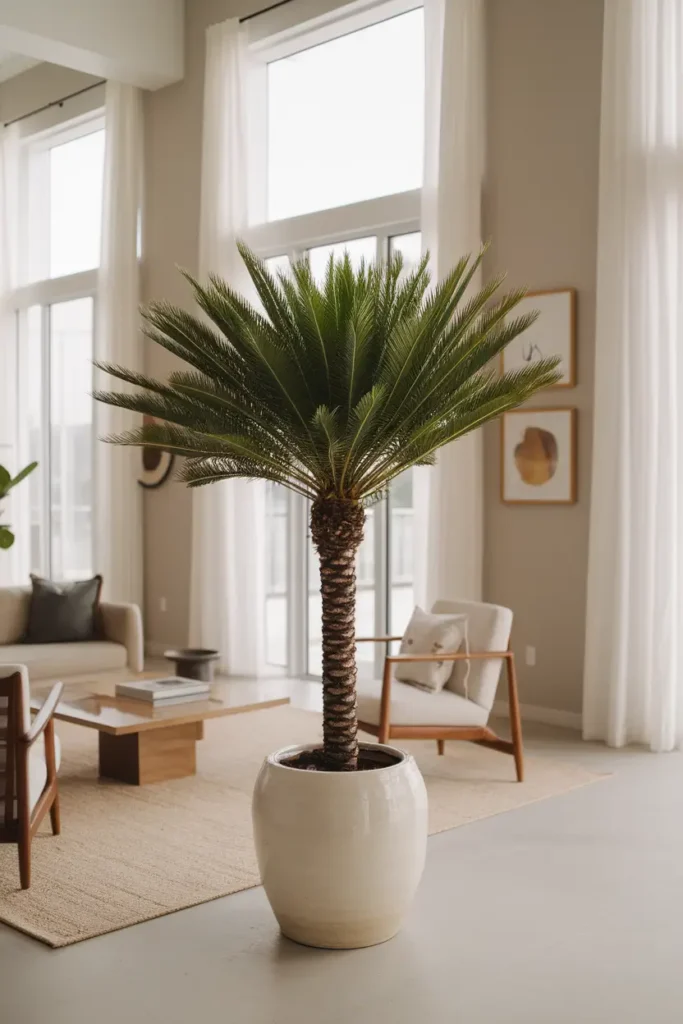
The lady palm is a tropical tree that’s perfect for low-light spaces, making it a favorite for offices or dimly lit corners at home.
Its shiny, fan-shaped fronds give it a lush, decorative appeal, and it’s incredibly easy to care for.
This plant requires moderate watering—allowing the topsoil to dry out slightly between waterings—and should be kept away from direct sunlight to avoid scorching its delicate leaves.
It’s also a great air purifier, adding both beauty and health benefits to your indoor space.
12. Dragon Tree (Dracaena marginata)
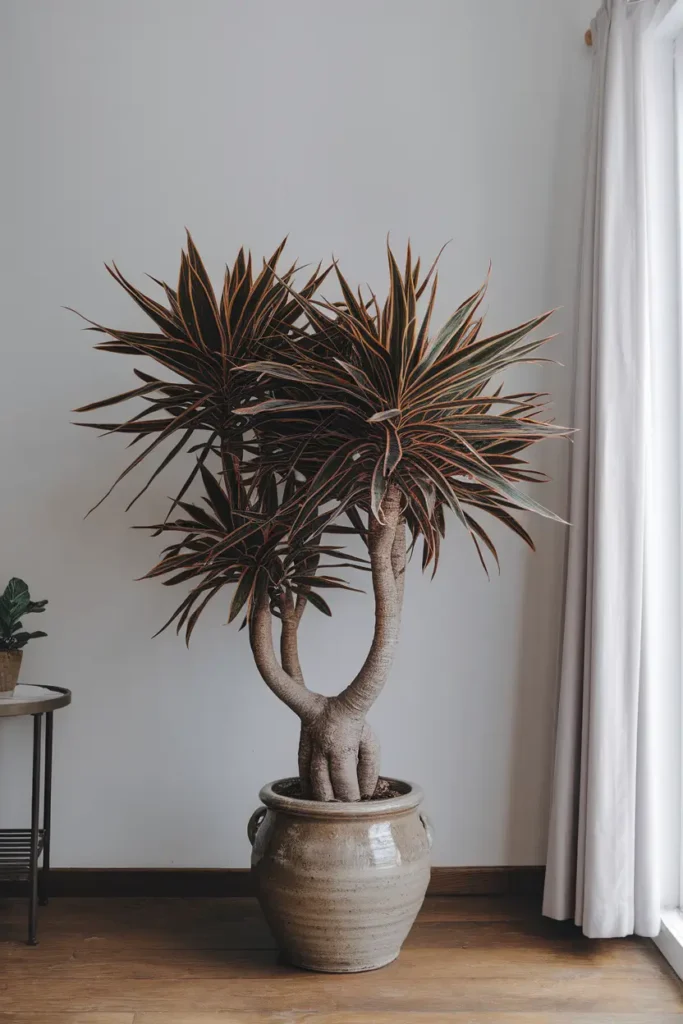
With its striking sword-shaped leaves edged in red, the dragon tree is not only visually stunning but also one of the easiest indoor trees to maintain.
It thrives in indirect light but can adapt to lower light conditions, making it versatile for various spaces.
Watering is straightforward—only when the soil feels dry—making it perfect for those with busy schedules.
Its tall, dramatic shape makes it an excellent choice for adding a bold statement to your room while being low-maintenance.
13. Parlor Palm (Chamaedorea elegans)

The parlor palm is a classic houseplant that instantly brings a tropical vibe to any space.
Known for its elegant, arching fronds, it thrives in low-light conditions with minimal care, making it a great choice for beginners or those without a green thumb.
It grows slowly, so it won’t outgrow its space quickly, and it only needs occasional watering when the top inch of soil is dry.
Its timeless look fits seamlessly with any decor, adding a refined, yet cozy touch to your home or office.
14. Majesty Palm (Ravenea rivularis)

The majesty palm is a large, lush indoor tree that thrives in warm, humid environments, making it an excellent choice for creating a tropical oasis indoors.
While it’s a bit more temperamental than other palms, regular care can keep it thriving.
Mist its leaves regularly to maintain humidity, and ensure its soil is kept lightly moist but not soggy.
This palm prefers bright, indirect light, and its stunning green fronds make a bold, eye-catching statement in any room.
15. Corn Plant (Dracaena fragrans)
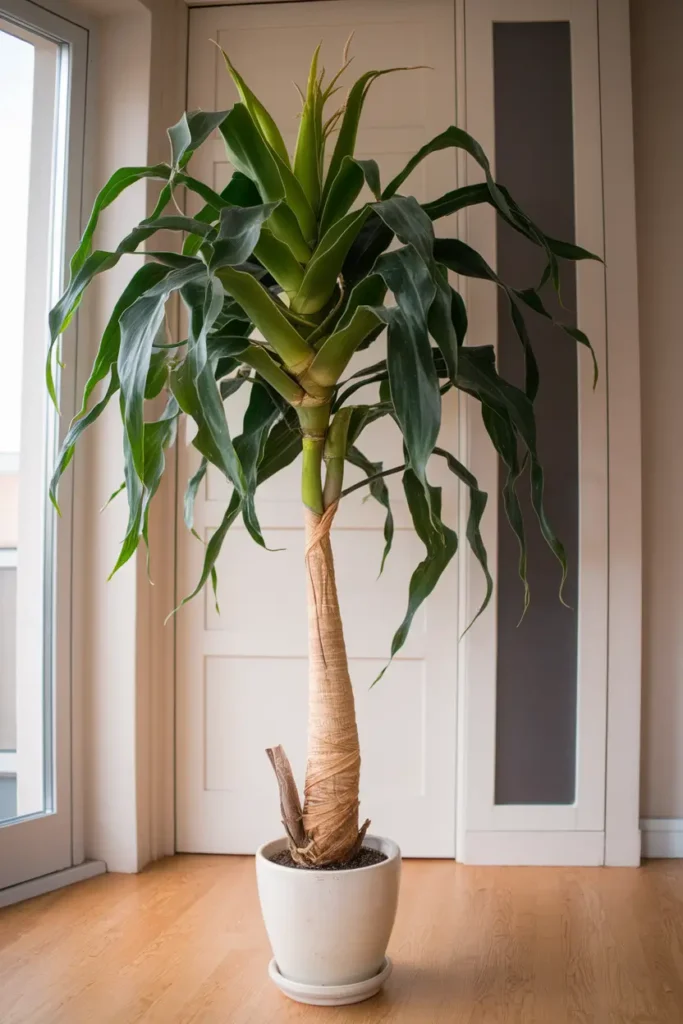
The corn plant is a hardy indoor tree with tall, slender trunks and long, arching leaves that resemble corn stalks.
Its compact shape makes it ideal for small to medium spaces, and it can tolerate less-than-ideal growing conditions.
However, it thrives best in moderate light and high humidity, so placing it near a sunny window with occasional misting is ideal.
Its forgiving nature and striking appearance make it a popular choice for homes and offices alike.
16. Kumquat (Citrus japonica)
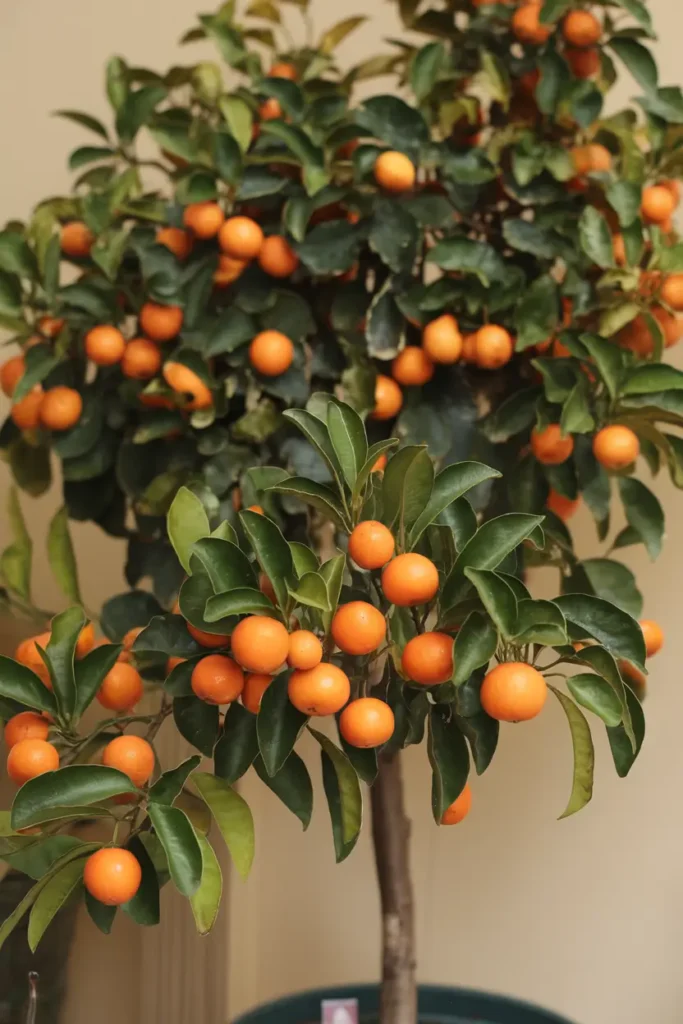
The kumquat tree brings a cheerful pop of color indoors with its bright orange fruits, which are both decorative and edible.
It thrives in sunny spots and may need a grow light during darker seasons to ensure it gets enough light.
This citrus tree grows well in containers with excellent drainage and requires moderate watering—allowing the topsoil to dry out slightly between waterings.
Its fragrant blossoms and vibrant fruit make it a functional and beautiful addition to any indoor garden.
17. Ponytail Palm (Beaucarnea recurvata)
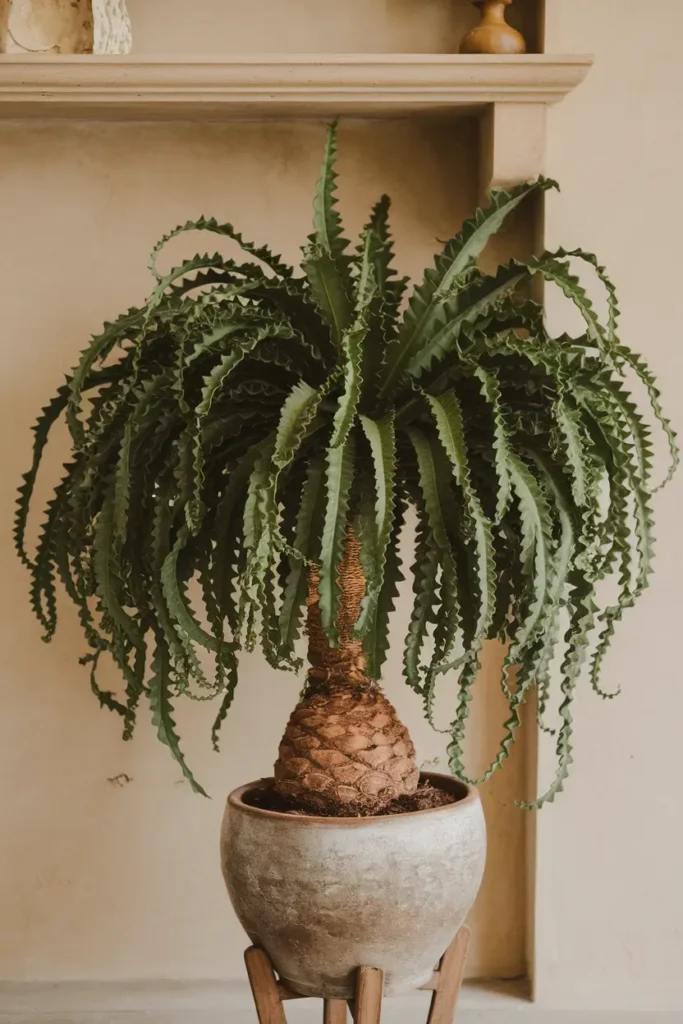
The ponytail palm, despite its name, is actually a succulent, known for its unique, bulbous base and cascading, curly leaves.
It’s an excellent choice for those who want an interesting, low-maintenance indoor tree.
This plant requires minimal water—only once every few weeks—and can survive in both direct and indirect sunlight, making it highly versatile.
Its playful, distinctive look makes it a conversation starter and a stylish addition to any room.
18. Bay Laurel (Laurus nobilis)
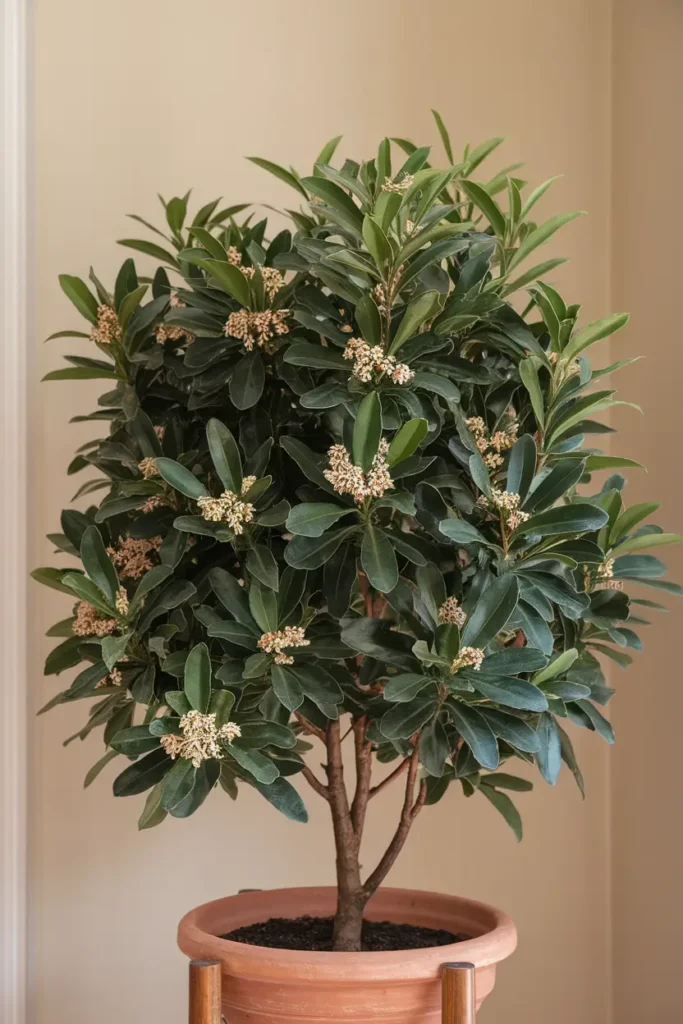
The bay laurel is a functional and stylish indoor tree, known for its fragrant leaves that can be used in cooking.
This Mediterranean plant thrives in bright, indirect light and prefers well-draining soil. It needs watering once the top inch of soil feels dry but shouldn’t be overwatered.
As it grows, you can prune it to maintain its shape, making it a chic and practical choice for kitchens or living spaces. Its culinary and aesthetic appeal make it a standout addition to any home.
Maintenance Tips for Healthy Indoor Trees
Caring for indoor trees can be surprisingly straightforward if you follow these simple guidelines.
- Light Requirements: Always check how much light your tree needs and place it accordingly. Some trees (like citrus and banana trees) need bright, direct sunlight, while others (like parlor palms) thrive in low light.
- Proper Watering: Overwatering is one of the most common mistakes. Always check if the top inch of soil is dry before watering.
- Humidity Levels: Tropical trees thrive in high humidity. Use a humidifier or mist your plants regularly to replicate their native environment.
- Fertilization: Feed your indoor trees during the growing season with a balanced fertilizer to support healthy growth.
- Pruning and Cleaning: Trim dead or yellowing leaves to promote growth. Wipe large leaves with a damp cloth to remove dust.
FAQs
Why is your indoor tree dropping leaves?
Leaf drop can occur due to various factors, including changes in light, water stress, or temperature fluctuations. Ensure the tree is in a stable environment and adjust its care as needed.
How often should you water your indoor tree?
This depends on the species, but most indoor trees need watering once the top inch of soil dries out. Research your specific plant and don’t overwater it.
Can you grow fruit-bearing trees indoors?
Yes! Citrus trees, kumquat trees, and even small banana trees can bear fruit indoors with the right care. Ensure they receive adequate sunlight and proper nutrients.
Sum Up
Indoor trees add more than greenery to your home; they enhance your space, purify the air, and bring joy to your everyday life.
From the beginner-friendly jade tree to the exotic banana tree, there’s a perfect match for every household.
With a little care and attention, you’ll soon have your own indoor oasis.
Not sure where to start? Begin with a low-maintenance option like the dragon tree or lady palm, and as your confidence grows, you can explore more exotic species. Happy planting!

